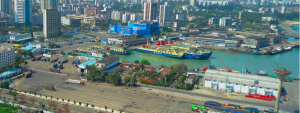In this blog post, Aditi Sampat, Advocate at Nabco Enterprises Pvt Ltd and a student of the Diploma in Entrepreneurship Administration and Business Laws by NUJS, provides an overview of State Government or Private SEZs notified or approved prior to the SEZ Act of 2005.
Introduction to Special Economic Zone
Special Economic Zone (SEZ), conceptually, is a geographical region which has economic laws different from the country’s applicable economic laws, the primary underlying objective being increasing economic growth through foreign investment.
In addition to India, SEZs have been established in several countries across the globe like China, Jordan, Poland, Philippines, Kazakhstan and Russia.
According to the estimates of the World Bank, in 2007 itself, there were 3000 projects involving SEZ in 120 countries across the world.
On a Global level, the following are basic objectives which have led to the establishment of SEZ:
- Economic growth and development through exports and backwards integration.
- Growth in Foreign Investment.
- Development of Infrastructure.
- Generation of Employment Opportunities.
- Upgrading of managerial and technical skills.
The objectives mentioned above can be achieved through an effective SEZ policy laid down by the State which provides the following incentives –
- Income Tax holidays.
- Indirect Taxes and Duty Exemption.
- Hassle Free Environment, that is, Corruption free Environment.
- No Currency restrictions.
- Norms for Foreign Investment to be relaxed.
- Excellent Infrastructure facilities.
The Facilitation of International Trade has been recognised by all developing countries for the sustained growth of the economy as well as being a major contributor to the GDP of the nation. In the wake of the continuing commitment to liberalisation, the Government of India has adopted a multi-pronged approach to promoting and increase foreign investment in India, since the last decade. Several policy changes in the form of second generation reforms have been introduced by the Government of India to achieve the above objective.
Evolution of SEZ – Worldwide and in India
Worldwide:-
The Origination of SEZ dates back to 1896 when the first Industrial Park was set up in Manchester. ‘Free trade zones’ designed to promote free trade were first set up in Hongkong and thereafter spread worldwide post the second World War.
The first Export Processing Zone (EPZ) which was designed to liberalise both trade and investment environment started operating in Ireland in 1960. Many developing countries adopted the EPZ model, though the success of the same has been slow after the 1990s.
The Chinese Experience – SEZs made their debut in 1979-80 when China first embarked the SEZ experiment. More than Trade and Investment promotion, China’s primary objective was to open its closed economy and experiment with foreign investment by choosing the SEZ experiment as a dominant feature of its policy. The policy was first tested in a few SEZ “pilot areas” before being introduced elsewhere. Subsequently, countries of the Soviet Bloc experimented the SEZ concept mainly with a view to using Foreign Investment to solve the unemployment problem. As it turned out, China has been one of the countries where the concept of SEZ turned out to be very successful. The Chinese Government has continually increased the number of open zones which as of 2008 stand at 1500.
In the 1980s, Shenzen and Xiamen were the most important SEZs in China, and by the 1990s, seven coastal SEZs gained importance, which attracted 80% of the foreign investment flow into China.
Summarising, SEZs have acted as a major FDI booster in China, wherein the Foreign Investment has increased from $3.5 billion in 1990 to the current levels of $50 billion. The Free zones have absorbed nearly 25% of the country’s cumulative FDI. Domestic investment has been triggered as a result of the FDI into SEZ. China’s five major SEZs account for less than 1% of the country; however, the SEZs account for more than 7% of China’s GDP.
Noteworthy is the fact, that most of the FDI inflow in China has come from the neighbouring Chinese dominated countries of Taiwan and Hongkong. This is one advantage which China has and which cannot be replicated elsewhere. China has fine-tuned its SEZ policy to meet the foreign investor’s requirement which has been a major reason for its success. Chinese expats have invested in SEZs as these investments made good economic sense. On the same lines, if the SEZ policy of India offers a similar package to NRIs, will lead to more lucrative investment opportunities to invest in India.
In India:-
In India, SEZ is closely linked with India’s Export Policy. There have been several incentives to boost exports since the 1960s. Some noteworthy incentives are:
- Export Processing Zone.

- Export Oriented Units.
- Software Technology Park Scheme.
- Electronic Hardware Technology Park.
- Export Promotion Capital Goods Scheme.
- Advance Licensing and Deemed Exports Scheme.
- Free Trade Zone.
The significant change happened in early 2000 when the Union Commerce and Industry Minister, the late Murasoli Maran, went to China to understand how China had become of the most investor-friendly countries. Particular to his trip was the visit to a SEZ in China. Subsequently, the Export-Import Policy of March 2000 announced the formation of SEZ in India.
The SEZ policy not only represents the incentives related to export but also it has changed the environment for exports as well as FDI, by offering a trouble free business friendly environment and world class infrastructure. Also, the policy also allows the Government to experiment with radical reform on a localised basis, given the country’s size and social disparities.
With the SEZs becoming the engines of growth, the Government encouraged and enabled the establishment of SEZs either by the State Governments themselves or by the private sector or jointly by the Private Sector and State Government.
In the meantime, considerable time and effort were spent by the Government to evolve an all-encompassing legislation to regulate SEZs which was called the Special Economic Zones Bill. It was introduced in the Parliament and passed subsequently leading to the Special Economic Zones Act 2005. The President’s assent was obtained on June 23, 2005, and the Act were notified in the Gazette on February 10, 2006. Post the notification of the Act, tremendous surge in interest to launch SEZ was seen as is evident from the fact that many industrial houses applied for the same to the Board of Approval.
State Government/ Private SEZ Approved/ Notified Prior To The SEZ Act, 2005
Prior to the passing of the Special Economic Zones Act 2005, the SEZ policy of 2000 laid down the framework for the setting up of SEZ with the objective to provide an internationally competitive and hassle free environment for exports. The policy laid down the formation of SEZ through investments by the State Governments, Private Sector or jointly. The policy also laid down that some of the existing Export Processing Zone would be converted to Special Economic Zone. Accordingly, the following seven EPZ were converted to SEZ –
- Kandla, Kachchh, Gujarat.
- Seepz, Maharashtra.
- Cochin, Kerala.
- Falta, West Bengal.
- Madras, Tamil Nadu.
- Vizag, Andhra Pradesh.
- Noida, Uttar Pradesh.
The following is the list of SEZ which were established prior to the Special Economic Zones Act 2005 in addition to the above EPZ which have been converted to SEZ –
- Surat SEZ.
- Jaipur SEZ.
- Indore SEZ.
- Jodhpur SEZ.
- WIPRO SEZ.
- Manikanchan SEZ.
- Mahindra City SEZ.
- Nokia SEZ.
The recent past has witnessed an exponential growth in the investment, exports and employment in SEZ mentioned above which has led to the overall economic growth of the country.
However, post the Special Economic Zones Act 2005, most of the approvals for SEZ have been granted to the IT sector which comprises of 62% of the total formal approvals till date.
Recent Developments and Conclusion
Recently, Government of India has brought in the concept of Investment regions modelled along the lines of Pudong, Rotterdam to dot the map of India. To obtain maximum possible leverage from the proposed investment in infrastructure, the Government has planned the setting up of five or 6 such regions in India.
The proposal which is being debated has envisaged a single mega industry led cluster which will have planned network of high-quality roads, air and seaports and power plants connecting every industry along with development area measuring 250 to 300 kilometres. There is also a proposal to subsume the existing SEZs in such Investment Regions.
The establishment of the SEZ has undoubtedly increased exports and propelled International Trade. More significantly, it has led to a large amount of foreign investment coupled with infrastructure construction and commerce. Foreign companies have established their presence and exports have grown significantly. Along with Foreign investment, foreign advanced technology has been brought into the country which is a major factor in enhancing economic growth of the country. The enactment of the SEZ Act has led to the fulfilment of the economic reforms as the multiplier effect of economic activities triggered by SEZ have materialised. The true challenge now is whether India through its SEZ can leverage the cost advantage and knowledge base and break China’s monopoly as the preferred destination for doing business.
Sources:
- https://www.pwc.in/publications/assets/sezinindia.pdf
- http://www.nishithdesai.com/fileadmin/user_upload/pdfs/Special_Economic_Zones.pdf











